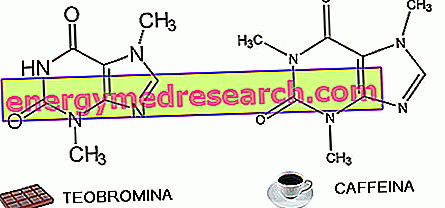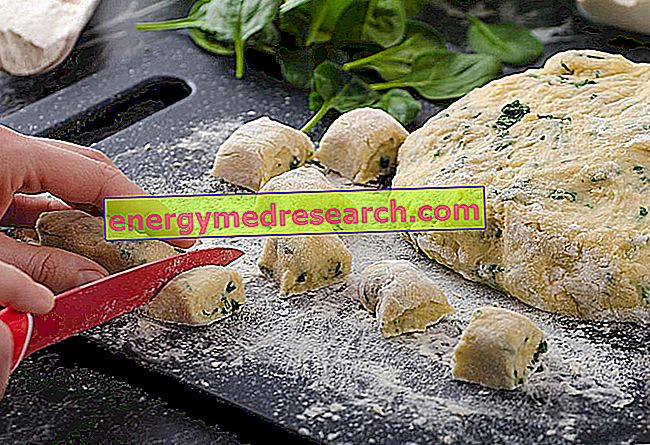What is a hunger crisis?
For hunger crises during sport we mean the moment when the glycogen reserves of the body, especially the muscular ones, are insufficient to sustain the physical effort necessary for the athlete. The result is a relatively abrupt and often noticeable decline in performance, with the appearance of symptoms such as a sensation of cold, intense hunger, a sense of weakness and general malaise (the athlete literally feels "emptied" of energy).
The crises of hunger typically affect endurance athletes (cyclists, marathon runners ...), while they are almost non-existent among athletes engaged in shorter and more intense efforts. Again, hunger crises often affect amateur athletes and beginners, either because they are inexperienced in managing their diet based on their efforts, or because they are poorly metabolic - in saving glycogen, oxidizing high percentages of fatty acids even at medium to high intensity levels.
Watch the video
X Watch the video on youtubeImportance of glycogen reserves in sport and onset of hunger crisis

In sports practice, energy consumption increases inexorably; this greater demand is mitigated by the hydrolysis-oxidation of the energy molecules:
- creatin-phosphate [CP]
- carbohydrates [CnH 2n O n ]
- fatty acids [CH 3 - (CH 2 ) n -COOH]
- branched amino acids [leucine, isoleucine and valine]
- substrates for neoglucogenesis (amino acids [NH 2 -CH-R-COOH], glycerol, lactic acid, pyruvate).
There are no energy metabolisms separated from each other and normally they are simultaneous and mixed together; however - based on: level of training, metabolic efficiency, type of effort, duration of effort, state of nutrition, subjectivity etc. - more than significant intra and inter-individual differences can be highlighted. Nevertheless, it is possible to assert that, even considering the aforementioned variables, in energy expenditure and in the prevalence of metabolic pathways:
carbohydrates (glucose) ALWAYS fall into the energy production mechanism, both in aerobic and anaerobic or mixed type efforts .
Carbohydrates or carbohydrates in the body derive from nutrition (simple and complex) but can also be produced in large part on an endogenous level through neoglucogenesis (being content with limited efficacy and efficiency); in basal conditions, it is therefore possible to survive (but not always live in perfect psycho-physical health) even limiting them drastically in the diet. On the contrary, by carrying out aerobic sports that require a high intensity of effort, it is necessary that the organism is constantly EU-fed, that is, that it is in a perfect state of nutrition; the glycemic homeostasis and the consistency of the glycogen reserves are fundamental criteria in the evaluation of the state of nutrition of a subject (therefore also of a sportsman) who, not taking carbohydrates with the diet, could not count on an effective recovery of the reserves of sugars. The latter can and must be stored, however, feeding mainly on molecules that require an intense metabolic commitment to be converted into glucose and subsequently stored in muscle and liver (protein amino acids and triglyceride glycerol), it is not possible to reach COMPENSATION levels nutritionally fast and consistent.
Ultimately, for an endurance sportsman (cycling, bottom swimming, cross-country skiing, cross-country running, bottom rowing, tracking etc.) eating unbalanced means risking the onset of the hunger crisis during the performance due to the sugar depletion, and more specifically of muscle glycogen.
Glycogen reserves
Glycogen is a complex carbohydrate, or a polymer of glucose; in practical terms it is possible to consider it as the "animal" equivalent of starch (vegetable polysaccharide). It, together with the glucose already dissolved in the blood (glycaemia), is the only source of carbohydrates AVAILABLE for the body. It is estimated that, on average, the adult organism can contain about 300-400g of glycogen respectively located in: liver 25-30%, muscles 70-75% and minimally in the kidneys (about 1-2%). Depending on the storage district, glycogen is used for different purposes; the hepatic one is necessary for the maintenance of the glycaemia, the muscular one is deputed to the sustenance of the contractile effort (see above) while the renal one to the maintenance of the filtration efficiency.
Glycogen reserves have a LIMITED CAPACITY; those muscles can be increased with training ... but up to a certain point! NB . the consistency of the glycogen reserves in sportspeople is evaluated by means of a parameter called AEROBIC RESISTANCE (time necessary to exhaust the reserves during an effort in the aerobic threshold). From the quantitative point of view the glycogen does NOT represent a GOOD reserve; to be stored it needs "ample space", because its chemical bonds also include a high amount of water (almost absent in fat reserves: adipose tissue); it is estimated that for every gram (g) of glycogen 2.7g of water are indispensable.
Assuming a COMPLETE exhaustion of stocks of muscle glycogen (an almost impossible condition to achieve in sport, as the hunger crisis occurs slightly earlier) would mean a reduction in body mass of:
300g x (1g + 2.7g) = 1110g ... or 1.1kg
it should also be added a percentage of hepatic depletion, since the liver, although NOT directly assigned to energetic muscle sustenance but to glycemic maintenance, in metabolic avidity conditions frees as much glucose as is necessary for glycemic homeostasis. We remind you that blood glucose, although mainly responsible for the correct functioning of the central nervous system (CNS), during sports activity contributes to the muscular energy supply.
Hunger crisis during sport: how to prevent it?
In light of the above, it can be deduced that the hunger crisis can take over in a decisive manner ONLY when the reserves of muscle glycogen are close to exhaustion; to avoid this, it is necessary for the athlete or athlete to feed in the most suitable manner and allow his body to recover the physical stress induced by the training.
The appropriate diet to prevent hunger crises during sport is characterized by a substantial base of complex carbohydrates well distributed in meals; it is possible to follow the general recommendations for a correct diet, therefore it would be appropriate to guarantee a quantity of carbohydrates oscillating between 55 and 60% of the total calories. Proteins should not exceed 1.5 g / kg of body weight (possibly supported by an integration of branched amino acids) and lipids should be between 25 and 30% of the total energy. NB . We recall that, even in the sportsman (above all amateur) it is possible to introduce more energy than necessary with the risk of favoring the adipose deposit, therefore the overweight.
What differentiates the supply of an endurance sportsman who wants to prevent hunger crises from that of a sedentary is the energy distribution in the various meals of the day. Sportsmen (and especially athletes) carry out particularly demanding physical activities that significantly contribute to the increase in caloric needs; assuming that a subject X has a daily energy expenditure of 2300kcal (basal metabolism + customary activities), after an afternoon afternoon cycling training (from 16:00 to 18:15) it could easily reach 3500-4000 kcal TOT; in order to distribute them correctly, those brought by carbohydrates should be distributed throughout the day ... BUT with greater density BEFORE, DURING and IMMEDIATELY AFTER physical activity! A simple and effective method (for a novice and not for a nutrition professional that SHOULD be a little more accurate ...) could be the following:
- Organize daily meals away from training in an ordinary way (in this case: breakfast, morning snack, lunch [... training ...] and dinner).
- Compose a PRE-training meal (whether main or secondary) with foods based on carbohydrates with a low glycemic index and rich in dietary fiber (by moderating lipids and proteins) to be consumed around 90-120 'before the effort; for example 100g of "basmati" rice seasoned with 100g of vegetables, 10g of extra virgin olive oil and 10g of grated cheese (about 450 kcal).
- To supplement DURING the sporting activity with maltodextrin dissolved in water, if necessary with branched amino acids and mineral salts, structuring a slightly hypotonic drink of at least 1-1.5 liters and about 300-350kcal.
- In the immediate POST training (even before the shower!), Compose an additional meal based on medium and high glycemic index carbohydrates with low fat and low protein content. An example would be: 200g of potatoes seasoned with extra virgin olive oil, 2 slices of white bread and 1 banana (about 400kcal).
On balance, to prevent the hunger crisis from occurring during sport due to the exhaustion of muscle glycogen, it is NECESSARY:
- Introduce the right amount of energy
- Introduce the right amount of carbohydrates
- Properly distribute nutrients
- Properly share daily meals
- Leave the right recovery to the body
- Measure the energies during the performance to avoid ending the glycogen reserves early.



